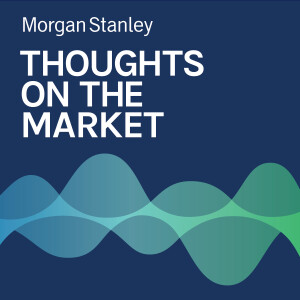
Despite companies beginning to report earnings misses and poor stock performance, the S&P 500 is on the rise, leading many to wonder how the Fed will react to this new data in their coming meeting.
----- Transcript -----
Welcome to Thoughts on the Market. I'm Mike Wilson, Chief Investment Officer and Chief U.S. Equity Strategist for Morgan Stanley. Along with my colleagues, bringing you a variety of perspectives, I'll be talking about the latest trends in the financial marketplace. It's Monday, October 31st at 11 a.m. in New York. So let's get after it.
Two weeks ago, we turned tactically bullish on U.S. equities. Some clients felt this call came out of left field, given our well-established bearish view on the fundamentals. To be clear, this call is based almost entirely on technicals rather than the fundamentals which remain unsupportive of most equity prices and the S&P 500.
Today, we will put some meat around the fundamental drivers for why this call can work for longer than most expect. Last week was the biggest one for third quarter earnings season in terms of market cap reporting. More specifically it included all of the mega-cap tech stocks that make up much of the S&P 500. On one hand, these companies did not disappoint the fundamental bears like us who've been expecting weaker earnings to finally emerge. In fact, several of these large tech stocks reported third quarter results that were even worse than we were expecting. Furthermore, the primary driver of the downside was due to negative operating leverage, which is a core part of our thesis on earnings as described in the fire and ice narrative. However, these large earnings misses and poor stock performance did not translate into negative price performance for the S&P 500 or even the NASDAQ 100.
This price action is very much in line with our tactical bullish call a few weeks ago. In addition to the supportive tactical picture we discussed in prior notes, we fully expected third quarter results to be weak. However, we also expected most companies would punt on providing any material guidance for 2023, leaving the consensus forward 12 month earnings per share estimates relatively unchanged. This is why the primary index didn't go down in our view, and actually rose 4%.
The other driver for why the S&P 500 rose, in our view, is tied to the upcoming Fed meeting this week. While the Fed has hawkishly surprised most investors this year, we've now reached a point where both bond and stock markets may be pricing in too much hawkishness. First, other central banks are starting to slow their rate of tightening. Second, there are growing signs the labor market is finally at risk of a downturn as earnings disappoint and job openings continue to fall. Third, the 3 month 10 year yield curve is finally inverted, and that is one item Fed Chair Jay Powell has said he's watching closely as a sign the Fed has gone far enough.
However, the best evidence the Fed has already done enough to beat inflation comes from the simple fact that money supply growth has collapsed over the past year. Money supply is now growing just 2.5% year over year. This is down from a peak of 27% year over year back in March of 2021. A monetarist which suggests inflation is likely to fall just as rapidly as it tends to lag money supply growth by 16 months. This means longer term interest rates are likely to follow, which can serve as a driver of higher valuations until the forward earnings per share estimates fall more meaningfully.
What this all means for equity markets is that we have a window where stocks can rally on the expectation inflation is coming down, which allows the Fed to pause its rate hikes at some point in the near future, if not this week. Moreover, this pause must occur while earnings forecasts remain high. The bottom line is that we continue to think there's further upside toward 4000 - 4150 from the current 3900 level. However, for that to happen, longer term interest rates will need to come down, and that will likely require a less hawkish message from the Fed. That puts a lot of pressure on this week's Fed meeting for our tactical call to keep working. If the Fed comes in hawkish and squashes any hopes for a pause before it's too late, the rally could very well be over. More practically, anyone who jumped on board this tactical trade should use 3700 on the S&P 500 as a stop loss for remaining bullish. Conversely, should longer term interest rates fall after Wednesday's meeting, we would gain more confidence in our 4150 upside target for the trade and even consider further upside depending on the message from the Fed.
Thanks for listening. If you enjoy Thoughts on the Market, please take a moment to rate and review us on the Apple Podcast app. It helps more people to find the show.
More Episodes
 2024-11-15
2024-11-15
 2024-11-14
2024-11-14
 2024-11-13
2024-11-13
 2024-11-12
2024-11-12
 2024-11-11
2024-11-11
 2024-11-08
2024-11-08
 2024-11-07
2024-11-07
 2024-11-05
2024-11-05
 2024-11-01
2024-11-01
 2024-10-31
2024-10-31
 2024-10-30
2024-10-30
 2024-10-29
2024-10-29
 2024-10-28
2024-10-28
 2024-10-25
2024-10-25
 2024-10-23
2024-10-23
Create your
podcast in
minutes
- Full-featured podcast site
- Unlimited storage and bandwidth
- Comprehensive podcast stats
- Distribute to Apple Podcasts, Spotify, and more
- Make money with your podcast
It is Free
- Privacy Policy
- Cookie Policy
- Terms of Use
- Consent Preferences
- Copyright © 2015-2024 Podbean.com





